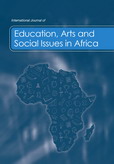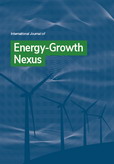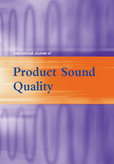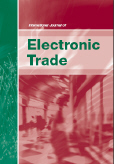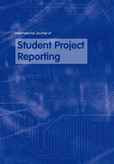Explore our journals
Browse journals by subject
Research picks
- Highway to the safety zone
A new data-driven technique for obstacle avoidance in autonomous vehicles is reported in the International Journal of Vehicle Design. The approach might overcome many of the longstanding challenges in the development of self-driving navigation.
Obstacle avoidance refers to the ability of a vehicle to detect and manoeuvre around objects in its path. Despite years of development, many systems still struggle with this core capability, often producing inefficient routes, reacting slowly to sudden changes, or failing altogether in complex or unpredictable environments. The new method addresses these shortcomings by integrating advanced data mining and optimization algorithms into the vehicle's navigation process.
The researchers explain that multidimensional data mining is key to their approach. This involves extracting patterns from a wide array of data sources, including visual input from cameras, spatial measurements from LIDAR (light detection and ranging, a laser-based system for mapping distances), location data from GPS (Global Positioning System), and real-time traffic information.
This data is processed using K-means clustering, a machine-learning algorithm that groups similar data points without needing prior labels. The purpose is to allow the vehicle to interpret its surroundings more intelligently, recognizing patterns such as obstacle types, road features, or the movement of nearby objects.
Once the environment is processed, the vehicle builds what researchers call a target function. This is a mathematical model that balances the goals of safety, speed, and efficiency. To optimize this function, the team applies the Whale Optimization Algorithm (WOA), a method inspired by the foraging behaviour of killer wales, Orcinus orca. WOA excels at quickly identifying optimal solutions in complex spaces, making it well suited to the high-speed demands of on-road decision-making.
In their simulations, the team demonstrated an obstacle-avoidance success rate of almost 99 percent, with reaction times as fast as 0.44 seconds. These results represent a marked improvement over many existing techniques, which often require longer processing times and produce less direct or more conservative paths.
Wang, A., Yao, Y. and Shang, Z. (2025) 'An obstacle avoidance path selection for autonomous vehicles based on multi-dimensional data mining', Int. J. Vehicle Design, Vol. 97, No. 5, pp.1–21.
DOI: 10.1504/IJVD.2025.147128 - Say it right
A new approach that might improve the evaluation of college-level English teaching by incorporating a broader range of data sources could address longstanding concerns about the subjectivity of traditional assessment methods. Conventional evaluations often rely predominantly on surveys and test scores, which provide limited insight into the complexities of teaching quality. The new approach, discussed in the International Journal of Reasoning-based Intelligent Systems, instead integrates diverse forms of data, multimodal elements, to produce a more objective appraisal.
Multimodal elements encompass different types of information beyond text, including images and audio recordings related to the teaching process and student feedback. The study's main innovation lies in its use of an advanced computational framework that simultaneously analyses these varied data types, thereby capturing a more complete picture of the teaching environment.
A sophisticated algorithm, known as Cross-modal attention mechanism (CMAM), is used to identify meaningful relationships across modalities. For instance, it can link emotional expressions found in written comments with corresponding tones in audio or facial cues in images. This cross-referencing allows the system to interpret feedback in context, rather than treating each factor in isolation.
To bring information from the different modalities together, the system employs a gating mechanism. This regulates the contribution of each data source, ensuring that the most pertinent details have the most influence on the final evaluation. The combined data is then processed through a Transformer model, a machine-learning system that can understand complex patterns in language and context.
The model then performs sentiment analysis, which automatically detects the emotional tone behind the evaluations, whether positive, negative, or neutral. Unlike basic scoring, this method captures the subtleties of attitudes toward teaching quality, offering a richer understanding of student perspectives. A weighted naïve Bayes algorithm is then applied to come up with an overall evaluation score. Overall, this approach ensures the final assessment reflects not only what is said but also how it is expressed emotionally.
Chen, X. (2025) 'Objective evaluation of English teaching in colleges and universities based on textual analysis in multi-element perspective', Int. J. Reasoning-based Intelligent Systems, Vol. 17, No. 8, pp.11–20.
DOI: 10.1504/IJRIS.2025.147135 - Wherever I lay my hard-hat
The Swedish mining industry, previously associated with a relative high accident rate, has seen a notable shift in its approach to safety in recent years. The lessons it has learned may help other high-risk sectors around the world improve their safety record. Research in the International Journal of Mining and Mineral Engineering has used internal records from six Swedish mining companies to help develop a new framework for evaluating safety performance. The new approach prioritizes everyday safety practices over retrospective accident statistics.
Traditionally, safety performance in mining has been assessed reactively, by counting incidents and injuries. While such metrics are clear and easy to track, they provide a limited view. They tell us what went wrong, but not necessarily what was done to prevent it. The study argues that this reactive model overlooks crucial indicators of risk and resilience, particularly in complex environments where threats may be hidden until a failure occurs. A proactive model is needed.
The proposed framework focuses on the organisational and human systems that shape safety on a daily basis. These include how companies structure safety responsibilities, how they educate their workers and managers, and how they engage employees in identifying and addressing risks. By examining all of these elements, the study suggests, organisations might gain a much clearer picture of their safety readiness, before accidents happen.
Safety management structures and leadership roles are not just bureaucratic arrangements, the researchers assert, they are active mechanisms that influence how risks are perceived and managed on the ground. Effective safety leadership requires clear communication channels, defined responsibilities, and a culture of trust, where employees feel empowered to speak up about unsafe conditions or procedural flaws.
One of the study's central insights is that safety is not purely a technical problem. Rather, it is deeply social. The ability of a company to adapt to new risks, whether posed by emerging technologies or changing work patterns, depends heavily on its internal culture. Do employees feel they have a voice? Is safety treated as a shared responsibility? Are there mechanisms in place to learn from near-misses or unexpected disruptions?
This emphasis on the "social fabric" of safety represents a significant departure from older models that treat safety management as little more than a checklist or compliance exercise. The researchers point out that while social factors are harder to quantify than, whether everyone is wearing their hard-hat and safety boots, they are no less critical. In fact, they are often what determine whether technical measures are followed, or whether they can be adapted quickly under changing conditions.
The study also highlights a broader challenge facing industries that rely on complex technical systems: the detection of latent risks—problems that may not surface until multiple small failures interact in unexpected ways. As mining operations become more automated and digitised, traditional safety metrics struggle to capture these hidden vulnerabilities. In this context, the researchers suggest that companies need more adaptive tools that can account for the dynamic nature of modern work environments.
Nygren, M. and Sundström, E. (2025) 'A framework for safety performance indicators: the case of the Swedish mining industry', Int. J. Mining and Mineral Engineering, Vol. 16, No. 5, pp.1–17.
DOI: 10.1504/IJMME.2025.147146 - The sound of finance
Research in the International Journal of Accounting, Auditing and Performance Evaluation raises important questions about how auditors communicate complex professional judgements. A team at Shandong University of Finance and Economics in China found that subtle differences in disclosure style can significantly influence perceptions of auditors' diligence and competence.
This study follows recent reforms in international auditing standards: the mandatory inclusion of Critical Audit Matters (CAMs) in audit reports. CAMs are meant to highlight areas of greatest complexity or judgement during an audit, issues requiring scrutiny or posing reconciliation challenges. However, while auditors must describe these matters, current standards don't require them to offer a conclusive evaluation or opinion within CAMs. That decision is left to the auditor's discretion.
Drawing on psychological theory and professional norms, the research explored whether including a conclusive evaluation in CAMs affects how others perceive an auditor's professional care, a core principle involving diligence, prudence, and competence.
Through a controlled experiment with auditors at different career stages, the researchers observed a consistent pattern: CAMs that avoided definitive conclusions were viewed as demonstrating higher professional care. Conversely, including conclusive evaluations, such as stating a complex valuation was sound, was seen, especially by experienced auditors, as a lapse in cautious professionalism.
The explanation lies in social norms theory, which holds that individuals are judged not just on actions, but on how well those actions align with expectations. In auditing, restraint and prudence are valued over assertiveness, particularly amid ambiguity. This preference for discretion is especially strong in China, where indirect expression is a cultural norm.
Experienced auditors appeared particularly attuned to these norms. Their scepticism toward definitive CAMs suggests that professional maturity brings heightened awareness of how even slight deviations from tradition can affect credibility. Novice auditors, less familiar with these unwritten rules, showed milder reactions.
The findings have global implications. They reveal tension between formal standards and informal expectations. While conclusive CAMs are technically allowed, the profession may view them unfavourably. Regulators may need to clarify when such assertiveness is appropriate or best avoided.
For companies, the study highlights the need for technically skilled auditors who also grasp the communicative nuances of their role. As audit quality faces growing scrutiny, how findings are framed may matter as much as the findings themselves.
Han, D. and Guan, Y. (2025) 'Silence is golden? Disclosure of critical audit matters and auditors' perception of due professional care', Int. J. Accounting, Auditing and Performance Evaluation, Vol. 21, No. 5, pp.1–17.
DOI: 10.1504/IJAAPE.2025.147098 - Just drive, she said
A new approach to safety and reliability of intelligent vehicles tackles the challenges caused by actuator failures, sensor anomalies, and unpredictable driving conditions. The work builds on improved fault tolerance, the ability of a system to maintain proper function despite component faults. Details are discussed in the International Journal of Reasoning-based Intelligent Systems.
Conventional fault-tolerant methods typically rely on static or pre-trained models that do not adjust quickly to sudden failures or rapidly changing environments. To address this, the new research develops a control framework that integrates Just-In-Time Learning (JITL) and Heuristic Dynamic Programming (HDP).
JITL allows the system to create and update lightweight, localized models in real time using continuous data from vehicle sensors such as speed, steering angle, and environmental inputs. This enables rapid fault detection and classification by identifying unusual data patterns indicative of malfunctions.
The HDP system employs a dual-layer optimization structure with evaluation and execution networks. This design adjusts the vehicle's control strategy dynamically to compensate for faults and disturbances such as strong crosswinds or uneven road surfaces. Unlike traditional control methods that focus primarily on resisting faults, the HDP controller balances resilience with responsiveness, leading to smoother and more accurate vehicle trajectory tracking.
In their tests using the widely recognized Next Generation Simulation (NGSIM) traffic dataset, the researchers demonstrated notable improvements on previous systems. They were able to reduce lateral tracking errors and heading deviations by 30 to over 50 percent. They were also able to improve control smoothness by a third. The system maintained real-time responsiveness with minimal processing delays, demonstrating its practical viability.
Beyond technical performance, the paper also highlights some of the ethical considerations necessary for autonomous vehicle deployment. Transparency, ensuring automated decisions align with human logic and traffic laws, and accountability, clearly defining the roles of human drivers and automated systems and how they interact. Only by emphasizing such matters can public trust be built, and such vehicles meet regulatory standards.
Sun, Z. (2025) 'Fault-tolerant control of intelligent transportation vehicles based on instant learning and heuristic dynamic planning', Int. J. Reasoning-based Intelligent Systems, Vol. 17, No. 8, pp.21–28.
DOI: 10.1504/IJRIS.2025.147145 - Make AI the passenger for smarter tourism
Research in the International Journal of Reasoning-based Intelligent Systems has shown how artificial intelligence can be used to make personal recommendations on stopping-off places when one is travelling. The approach could optimise the route one takes and so reduce travel times and fuel consumption if travelling by road, for instance, while at the same time offering surprising and interesting places one might visit that reflect one's individual preferences and practical constraints. The system moves away from conventional travel planning, which typically suggests only the most popular destinations and largely ignores user needs or schedules.
At the centre of the research is a novel method for identifying and ranking points of interest, a term that encompasses landmarks, museums, scenic areas, and other tourist sites. While popularity remains a factor in the algorithm, the new method also accounts for how long visitors usually spend at a location and how these visits fit into a tourist's available travel time. The system can thus generate a travel itinerary that is not only appealing but achievable.
The researchers introduce a "point-of-interest correlation diagram". This tool maps how tourists interact with different attractions over time based on geotagging data from a well-known photo-sharing website. It spots patterns in preferences that go beyond surface-level interest. Then, the algorithm, based on principles from content-based recommendation systems, offers the user potentially the most interesting destinations that will fit their schedule.
In tests, tourist satisfaction with the suggested routes scored well over 90 percent. As mobile apps increasingly replace traditional guidebooks and group tours, travellers are always on the look out for tools that can recommend new places to visit but can also adapt to their behaviour. The present system could help make better use of limited vacation time, improve the quality of experiences, and even ease the pressure on heavily trafficked tourist sites by encouraging exploration of under-visited areas.
Ge, D., Wu, Q. and Lai, Z. (2025) 'Study on intelligent travel route recommendation method based on popularity of interest points', Int. J. Reasoning-based Intelligent Systems, Vol. 17, No. 2, pp.83–89.
DOI: 10.1504/IJRIS.2025.146930 - Do not feed the phish
Millions of us use social media and online messaging every day. It's convenient but as with every tool, there are risks, such as the threat of crime such as spam and scam messages and phishing attacks that have the potential to cost the victims dearly. Malicious messages disrupt the user experience and pose serious security threats by attempting to steal personal data, distribute malware, and compromise digital systems. Standard detection tools often lag behind the continually evolving tactics employed by attackers, leaving users vulnerable to increasingly sophisticated scams.
Research in the International Journal of Information and Computer Security, introduces a new approach that could improve the detection of spam on digital platforms. Central to the research is the use of a recurrent neural network, which can analyse text, and not only detect patterns but recognise those same patterns when it subsequently encounters them.
The approach also embeds a so-called soft attention mechanism, which enables the neural network to prioritize parts of a message that are most relevant to identifying spam or malicious intent. This mechanism mimics the way humans naturally focus on keywords or suspicious phrases when quickly scanning content.
In addition, the system also uses self-adaptive windowing to detect content drift, where the scammers and spammers continually change the type of language they use to try to avoid detection. The system can through windowing update its learning progressively as new types of spam and scam messages emerge. This avoids the need for complete and frequent reboots, instead the system undergoes on-the-job training. This adaptability, the researchers suggest, is important for maintaining detection accuracy over time.
Tests showed the model could achieve 99.3 percent accuracy, which surpasses traditional methods such as decision trees and even naïve Bayes classifiers. The number of false negatives and false positives was negligible even when the system was tested on realistic, imbalanced datasets, where spam is far less common than legitimate messages, to ensure that it would work well in real-world conditions.
Patil, S.M., Mhatre, S., Dakhare, B. and Chavan, G.T. (2025) 'Prevention of cyber attacks and real-time social media spam detection and sentiment analysis using recurrent self-adaptive windowing approach', Int. J. Information and Computer Security, Vol. 27, No. 2, pp.261–284.
DOI: 10.1504/IJICS.2025.146881 - Every brand you hate
Creating emotional bonds between consumers and brands has long been a marketing goal. But what happens when that emotional bond turns negative? Research in the International Journal of Internet Marketing and Advertising explores this darker side of brand relationships: brand hate.
Unlike brand loyalty, which drives repeat purchases and glowing recommendations, brand hate can spark direct complaints and damaging word-of-mouth. To better understand this phenomenon, researchers surveyed almost 500 young consumers who expressed strong aversion to brands they had used. The goal was to identify what motivates negative reactions and how these are expressed, whether in person or online.
Brand hate, defined as an intense, emotionally charged dislike, isn't as simple as it sounds. The study found two main motivations behind it: concern for others and the need to vent personal frustration. Each leads to very different kinds of behaviour.
The first, concern for others, is rooted in altruism. People who feel wronged by a brand often try to warn their friends and family, usually through offline conversations. These low-profile interactions may seem minor, but they can quietly damage a brand's reputation within close-knit communities, where trust matters a lot.
The second motivation, venting, is more self-focused and plays out online. Angry customers take to social media or review platforms not just to complain, but to release frustration, seek validation, or provoke a reaction. The internet's reach and speed make it an ideal outlet for these emotionally charged responses. A single angry post can go viral, rallying others with similar experiences and potentially catching the attention of media or competitors.
Both forms of brand hate can hurt businesses, but online negativity presents a particularly fast-moving threat. Public posts are visible, easily shared, and often permanent. Brands can't afford to ignore them. To manage this, researchers recommend agile digital customer service teams trained not just in quick problem-solving, but also in emotional intelligence. Responding empathetically, not just with facts, can help de-escalate frustration. While brand love may not be the outcome, moving a hater to a place of neutrality could be a realistic and valuable goal.
Francioni, B., Curina, I., Hegner, S.M., Cioppi, M. and Savelli, E. (2025) 'Brand hate and consumers' responses: an analysis in the offline and online environment', Int. J. Internet Marketing and Advertising, Vol. 22, No. 4, pp.460–483.
DOI: 10.1504/IJIMA.2025.146488 - The cultural blind spot of workplace bullying
Workplace bullying is being increasingly acknowledged as a serious problem associated with poor employee well-being and reduced organizational health. A study in the International Journal of Work Organisation and Emotion focusing on the issue in Brunei shows how cultural norms can redefine what counts as bullying. The researchers surveyed 160 employees across various sectors and analysed the responses, finding that there is a regionally specific understanding of workplace mistreatment.
In Brunei, employees commonly identify gossip, public insults, false accusations, and the denial of professional respect as bullying behaviour. However, overwork, commonly flagged as a form of abuse in many Western contexts, is rarely perceived as such. The researchers suggest this perception is different because of different attitudes to authority in a place where expectations of loyalty to superiors are culturally reinforced.
The researchers suggest that Brunei as a high power-distance society, a term used in social sciences to describe cultures where inequalities in power are accepted and rarely challenged. In such a working environment, behaviour that might otherwise be seen as unreasonable, such as excessive workloads or being asked to perform the duties of others, tends to be interpreted as a normal professional obligation. As a result, individuals subjected to this form of pressure often do not name it as bullying, let alone report it.
The study also complicates assumptions about who becomes a target. While conventional narratives often depict passive or underachieving employees as the most vulnerable, the Bruneian data suggests that even diligent, outgoing, or simply emotionally sensitive individuals are susceptible. Their perceived emotional openness or social visibility may, paradoxically, make them more noticeable, and thus more exposed, to hostile behaviour.
The problems this causes can become particular apparent when humour, serving as a social lubricant, is misused to create harmful dynamics. Jokes at the expense of newer employees may begin in jest, but often develop into persistent mockery or exclusion. When employees feel unable to object, especially when their boss is making the joke at their expense, the line between camaraderie and cruelty becomes dangerously blurred.
The researchers suggest that despite its prevalence, workplace bullying remains an unspoken issue in Brunei. Many victims choose not to report mistreatment, deterred by fears of retaliation or being labelled as troublemakers. This silence is compounded by an institutional absence of clear reporting mechanisms and the lack of legal protections specific to workplace harassment. In an increasingly globalised world, we need culturally informed approaches to organizational policy, so that problems like bullying can be eradicated in a culture-sensitive manner.
Zamree, F.M., Sumardi, W.A., Sumardi, W.H. and Anshari, M. (2025) 'Workplace bullying: its causes, consequences and coping strategies', Int. J. Work Organisation and Emotion, Vol. 16, No. 2, pp.111–143.
DOI: 10.1504/IJWOE.2025.146964 - Should I stay or should I go? The entrepreneurial clash
Received wisdom suggests that business closure equates to business failure. However, research in the International Journal of Entrepreneurial Venturing has challenged this assumption, suggesting that entrepreneurial exit is frequently a deliberate, strategic decision, particularly among those with the greatest resources at their disposal.
The researchers drew on data from more than 28000 individuals across 48 countries via the Global Entrepreneurship Monitor. Their work shifts the focus from the beginnings and growth of startups to their ends and attempts to answer a question that is rarely addressed in business research: why do entrepreneurs choose to exit their businesses?
Fundamentally, rather than being a marker of defeat or failure, the researchers found that exit often represents a rational choice, especially for individuals endowed with high levels of entrepreneurial capital. This term refers to three broad categories of resources: human capital (an entrepreneur's skills and experience), social capital (their professional networks and relationships), and financial capital (access to funding and liquidity). Indeed, those with greater resources were often more likely to exit their ventures than their less well-equipped peers. One might assume that access to greater resources would bolster the survival chances of a business, but the team's findings suggest that having more can also mean having more to gain elsewhere.
This idea is associated with opportunity recognition, the ability of an entrepreneur to spot viable or promising new ventures in the wider market. The study found that entrepreneurs with both financial capital and high levels of opportunity recognition are more likely to shut down a given startup and move on to new ventures – we often talk of serial entrepreneurs, after all. The logic is clear: if one sees a better opportunity on the horizon and has the means to pursue it, holding on to a current, less promising venture may represent a suboptimal use of resources.
Bogatyreva, K. and Laskovaia, A. (2025) 'Should I stay or leave? The role of human, financial and social capital in entrepreneurial exit', Int. J. Entrepreneurial Venturing, Vol. 17, No. 1, pp.73–87.
DOI: 10.1504/IJEV.2025.146890
News
Three Inderscience journals announced as open access-only titles
Inderscience's Editorial Office is pleased to announce that the following titles
- International Journal of Intercultural Information Management
- International Journal of Immunological Studies
- International Journal of Instrumentation Technology
are now Open Access-only journals. All accepted articles submitted from 4 July 2025 onwards will be Open Access, and will require an article processing charge of US $1600.
Four Inderscience journals announced as open access-only titles
Inderscience's Editorial Office is pleased to announce that the following titles
- International Journal of Applied Management Science
- International Journal of Information and Decision Sciences
- International Journal of Internet Manufacturing and Services
- International Journal of Learning Technology
are now Open Access-only journals. All accepted articles submitted from 30 June 2025 onwards will be Open Access, and will require an article processing charge of US $1600.
Three Inderscience journals announced as open access-only titles
We are pleased to announce that the following titles
- International Journal of Business Governance and Ethics
- International Journal of Electronic Marketing and Retailing
- International Journal of Medical Engineering and Informatics
are now Open Access-only journals. All accepted articles submitted from 25 June 2025 onwards will be Open Access, and will require an article processing charge of US $1600.
New Clarivate Web of Science 2025 impact factors for Inderscience journals
Clarivate has released its latest impact factors, and Inderscience's Editorial Office is delighted to report that many Inderscience journals have increased their impact factors, particularly the International Journal of Hydromechatronics and International Journal of Mobile Learning and Organisation.
The International Journal of Hydromechatronics, International Journal of Mobile Learning and Organisation and International Journal of Bio-Inspired Computation have achieved particularly high scores, and the International Journal of Automotive Technology and Management, International Journal of Entrepreneurship and Small Business, International Journal of Information and Computer Security and International Journal of Vehicle Performance have earned their first ever impact factors.
Impact factors can be found on all indexed journals' homepages. We thank and congratulate all the editors, board members, reviewers and authors who have played their part in these latest indexing achievements.
New 2024 Scopus CiteScores for Inderscience journals
Scopus has now released its 2024 CiteScores. Inderscience's Editorial Office is pleased to report that many Inderscience journals have achieved high CiteScores, particularly the following titles:
- International Journal of Hydromechatronics
- International Journal of Bio-Inspired Computation
- International Journal of Mobile Learning and Organisation
- International Journal of Green Economics
- International Journal of Integrated Supply Management
- International Journal of Web and Grid Services
- Journal for International Business and Entrepreneurship Development
The International Journal of Continuing Engineering Education and Life-Long Learning, International Journal of Intelligent Engineering Informatics, International Journal of Internet Marketing and Advertising, International Journal of Work Innovation have all significantly improved their scores, while the International Journal of Mobile Communications has reached the landmark of earning its first CiteScore.
All CiteScores are available on indexed journals' homepages. The Editorial Office thanks all of the editors, board members, authors and reviewers who have helped to make these successes possible.
